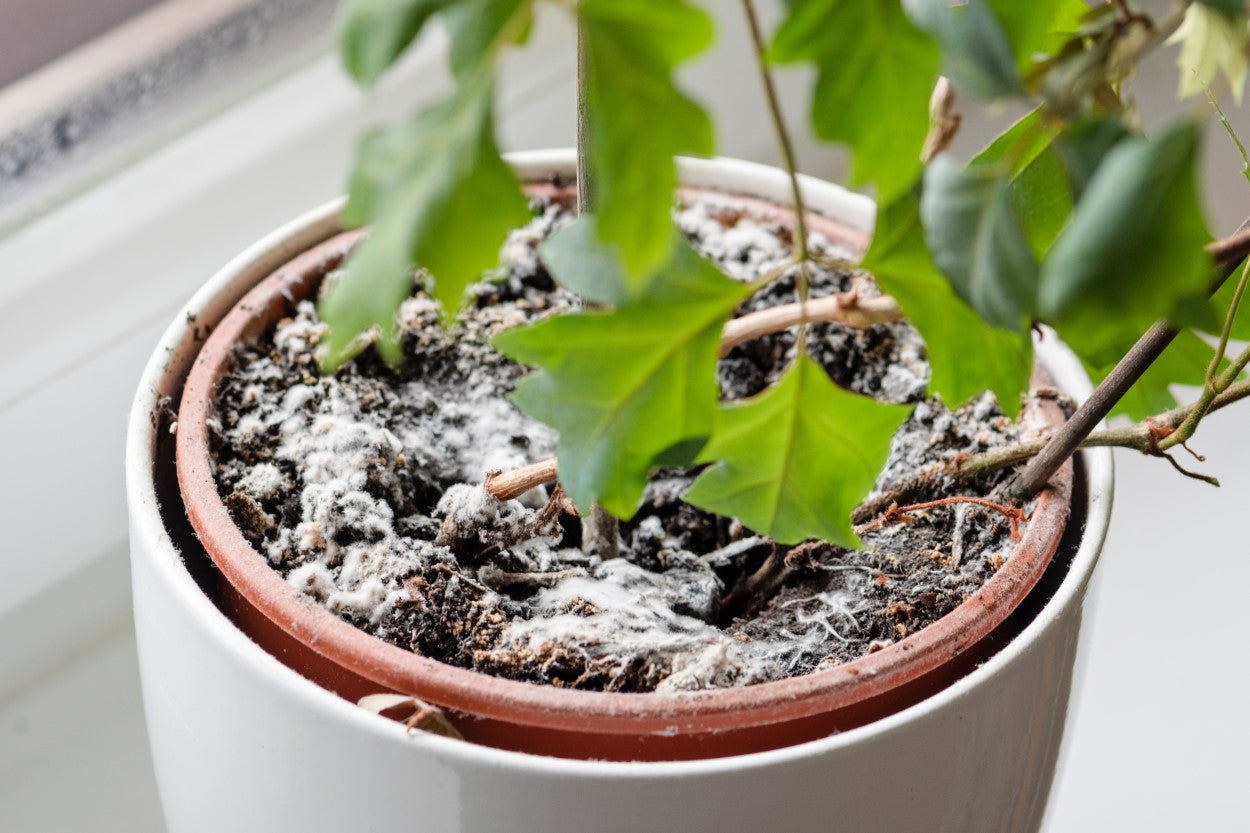Even though it’s really scary, air pollution Halloween costumes are rare due to the tendency for pollution to be invisible. This Halloween, Molekule set up a house of horrors haunted with pollutants to spread the word about the silent but violent threats lurking around your house.
Airborne Pathogens

Airborne viruses are always on everyone’s mind this time of year, but with a background of a global pandemic they seem just a little too close. Avoid viruses by wearing a mask and avoiding areas with poor ventilation. For an additional layer of protection, Molekule’s PECO technology is proven to destroy viruses like the common H1N1 influenza virus.
Pollen

Pollen levels have been increasing in recent years and will only continue to rise with rising carbon dioxide. There is at least one tree, weed, or grass spreading pollen in the wind all year except winter. Whole pollen grains can be caught and pushed out by our lungs, but they burst into tiny fragments when they get wet or break into equally tiny fragments when they dry out. These tiny bits are what get deep inside your lungs, into your bloodstream and throughout your body.
Dust Mites

Dust mites live almost everywhere and all over everything. They eat dead skin cells and other organic matter in dust, and drink humidity straight out of the air. The moisture from a daily shower is enough to sustain all the dust mites in the house. Fortunately they don’t bite, but they do leave behind droppings that are responsible for many dust allergies. Remember that less dust is also less dust mites.
Black Mold

Black mold is the boogeyman of indoor air quality, but isn’t actually a defined species of mold. Most mold that grows in homes due to excess moisture can make air quality worse, regardless of what color it is. Like pollen, mold can break up into tiny fragments that bypass the defenses of the lungs and end up in the blood with a ticket to anywhere in the body. In some cases, consistent exposure to mold spores can cause mold allergies or sensitivity to develop in otherwise healthy people.
Burnt Food

Anything that burns and fills the air with a noxious odor or visible smoke is going to make indoor air quality worse, and that is particularly true when cooking. The particles that rise out of burning food tend to harbor free radicals and toxic chemicals like benzene and formaldehyde. Large meals can be serious air quality hazards, some estimates put indoor air pollution during a Thanksgiving dinner on par with the worst outdoor urban air quality in the world.
Cleaning Products

It’s great to keep things clean, but sacrificing air quality for a shiny floor or a fresh scent probably isn’t worth it. All scents that are added to cleaning products are chemicals in the air, and can react with ozone or other substances and become fine particles. Just mopping with bleach can be compared to running a car in your house with the windows closed. What’s worse, the particles formed are usually very small and capable of entering your blood through your lungs.
Tobacco Smoke

Tobacco smoke is among the biggest dangers to our lung health. Burning tobacco releases all the dangers of smoke into the air like formaldehyde, benzene, and carbon monoxide. Second-hand tobacco smoke is just as bad, as is third-hand smoke, which refers to all the carcinogenic particles that stick to clothing, furniture, and walls.
Pet Dander

Pet dander is a necessary evil. If we want to have our furry friends in our homes, their skin, saliva, and urine will spread allergy triggers all over the place. So-called hypoallergenic pets still produce the same amount of sneeze-causing allergens, but their fur retains the dander for a little longer, giving the owner an opportunity to wash it down the drain before it triggers any allergies. Because once pet dander is in the air, it can linger for hours.
Cockroaches

Most of us are certain that cockroaches are gross, and few of us are surprised their foulness extends to spreading allergy triggers. In urban centers where cockroaches thrive there are higher rates of childhood asthma and the associated comorbidities. Throwing away old food and keeping the kitchen clean can help to reduce cockroaches, but they are here to stay.
Plants

Living plants look very nice but unfortunately don’t clean the air better than fake plants or anything else with the same shape, and their soil can harbor mold if overwatered. Dust and chemicals can land on and stick to a plant, but without an electric fan to move a lot of air most of the air pollution is out of reach. It would take about 330 spider plants to reduce the pollution in a 250 square foot room as much as a single Molekule Air Mini.
Gas Stoves

Gas stoves have emerged as not only an indoor air quality hazard, but outdoors as well. Few gas stoves seal completely when off, leaking trace amounts of methane and other extremely potent greenhouse gasses into the atmosphere. The nitrogen dioxide released by burning natural gas causes asthma in children at a similar rate as living with a cigarette smoker.
Capture and Destroy

Molekule air purifiers with PECO technology capture and destroy pollution like allergens and VOCs. Traditional purifiers collect pollutants where they can slowly be reintroduced into the air when the temperature and humidity changes or just as they work their way through the filter. PECO technology was designed to fill in the gaps in coverage that traditional purification methods neglect.
Stay tuned to our Facebook, Instagram, and Twitter accounts and the Molekule blog for more tips on how to avoid the scariest things in the air.







